The next day we left for the Highlands, my favorite part of the tour. I was happy to be seated for part of the day on the bus, and we particularly enjoyed our driver, Mark, who was kind enough to stop for picture opportunities and took such good care of our things. Driving that huge bus took a lot of skill, which I admired from my front seat.
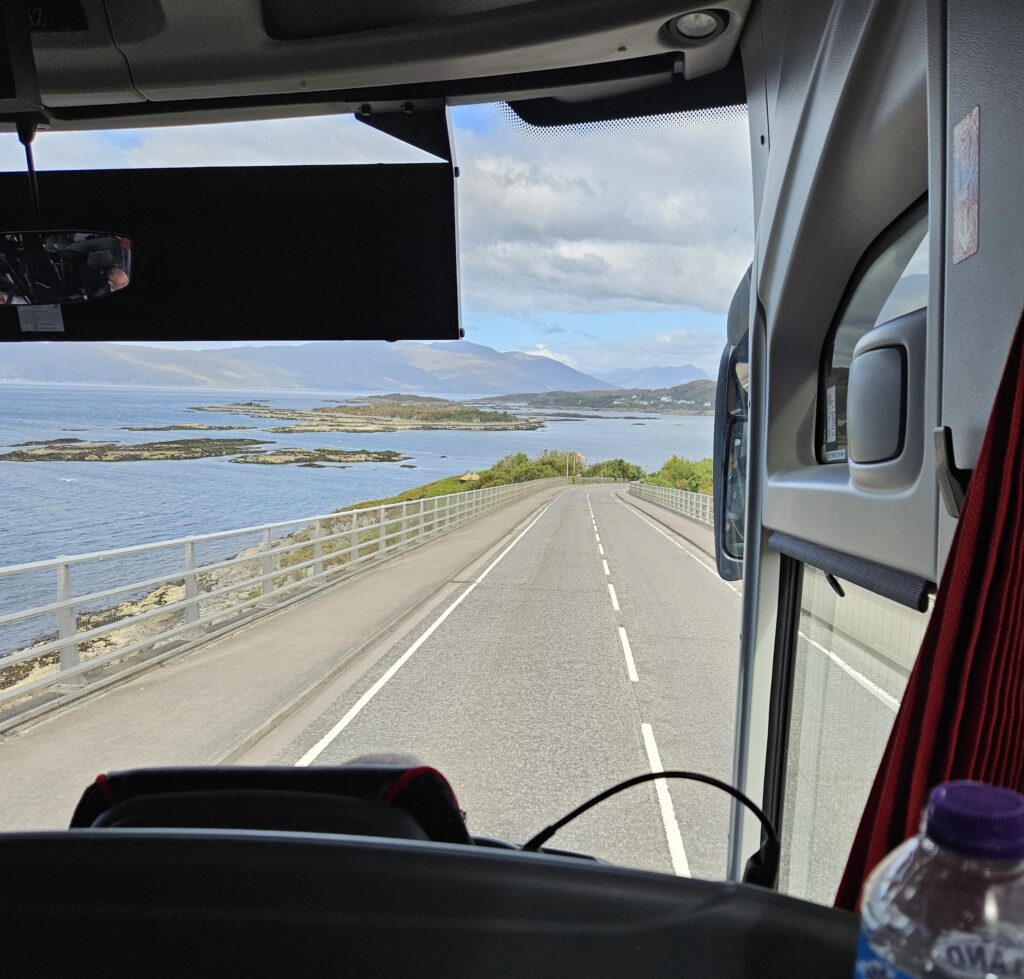
We stopped to admire and photograph Loch Lomond, Great Britain’s largest freshwater lake, and take in The Trossachs National Park, which gradually gave way from lowlands to high mountains, laced with lochs, rivers, and estuaries. Scotland is a very watery place. Then we visited the area of Glencoe, surrounded by deep valleys, rushing rivers, and waterfalls.
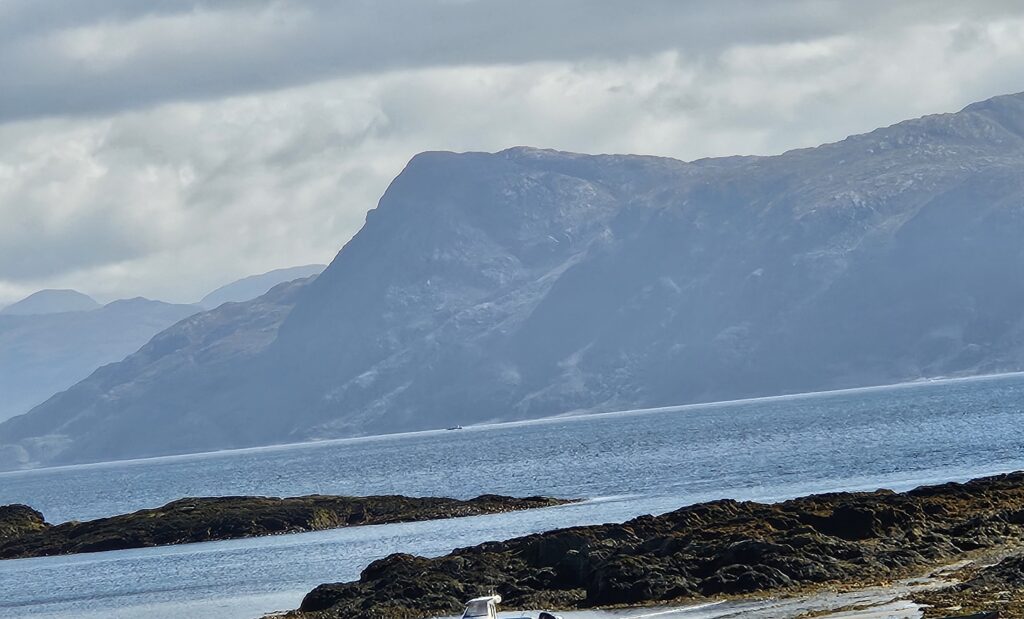
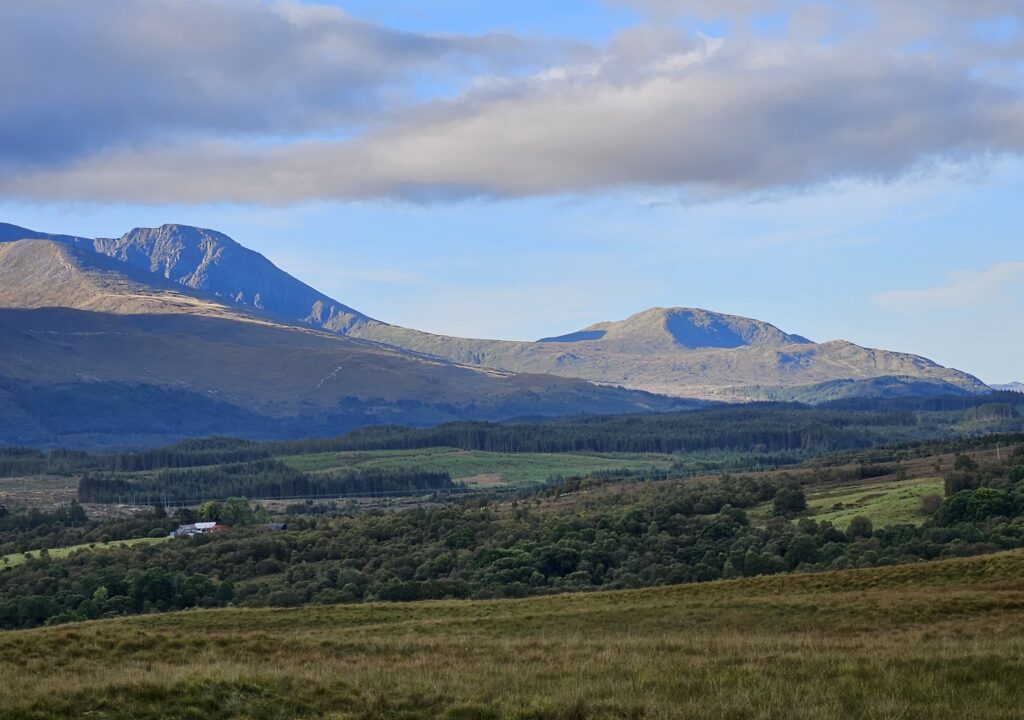
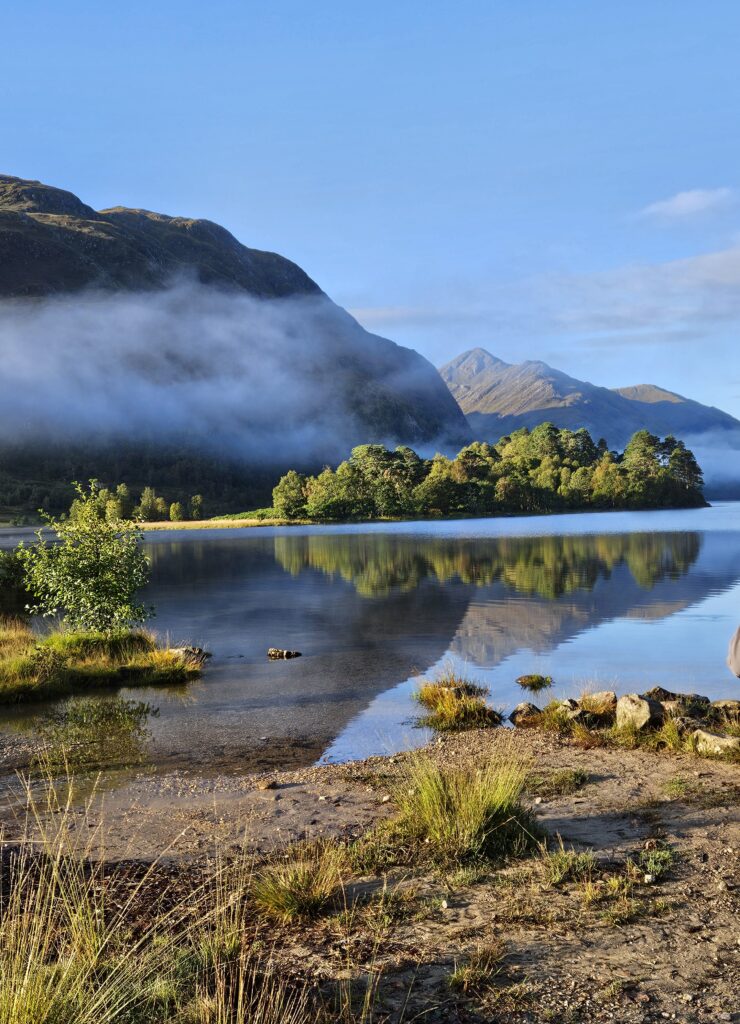
Excavations are ongoing of the site of the Massacre of Glencoe in 1692, in which 38 members of the Clan MacDonald were killed by forces acting on behalf of the government of King William III, who doubted their loyalty to their Protestant king. The Clan had fed the soldiers and given them shelter for nearly two weeks before they turned on their hosts, in an act of ultimate treachery.
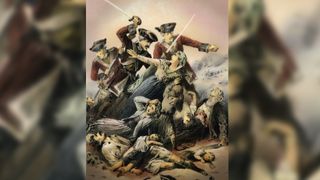
(Image credit: Culture Club/Getty Images)
The following day, we stopped at the Glenfinnan Monument, honoring Bonnie Prince Charlie (Charles Edward Stuart, pretender to the throne) and recognizing his leadership, poor though it was, of the Jacobite Rising of 1745. On the 19th of that year, Prince Charles Edward Stuart rowed up Loch Shiel (visible in the photo) towards the tiny hamlet of Glenfinnan with a small band of his most loyal supporters. He had called on clan chiefs to muster their men and join him here for a daring quest to restore the Stuarts to the British throne. Ultimately 1200 clansmen joined him. The rising ended in defeat at Culloden in 1746 and the Highlands suffered punishment and reprisals for years to come, including the total destruction of the clan system. The Glenfinnan viaduct is nearby and can be seen after a breathless hike up the hill behind the monument (we were given 15 minutes), which I chose not to take, although my husband did. This is NOT a photo we took, but you will perhaps recognize it as the famous bridge crossed by the Hogwarts Express steam train in the Harry Potter movies.
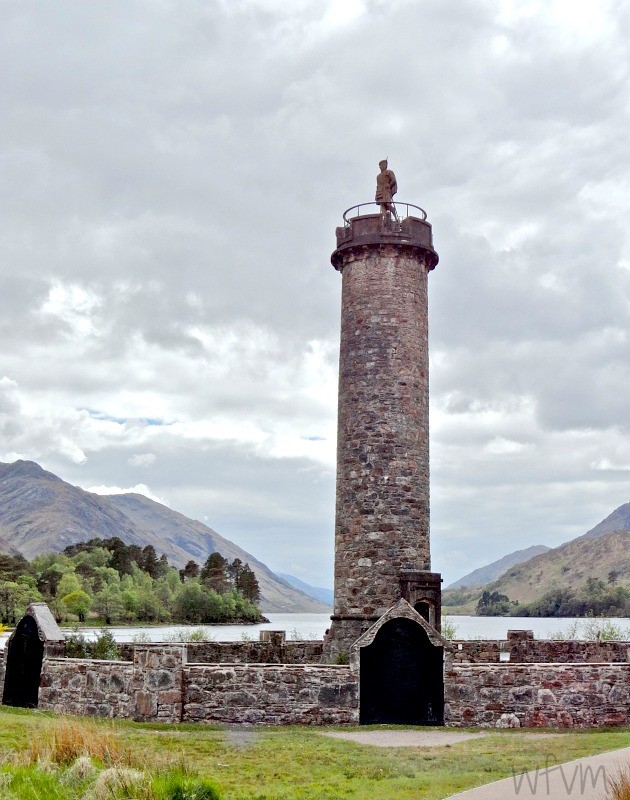
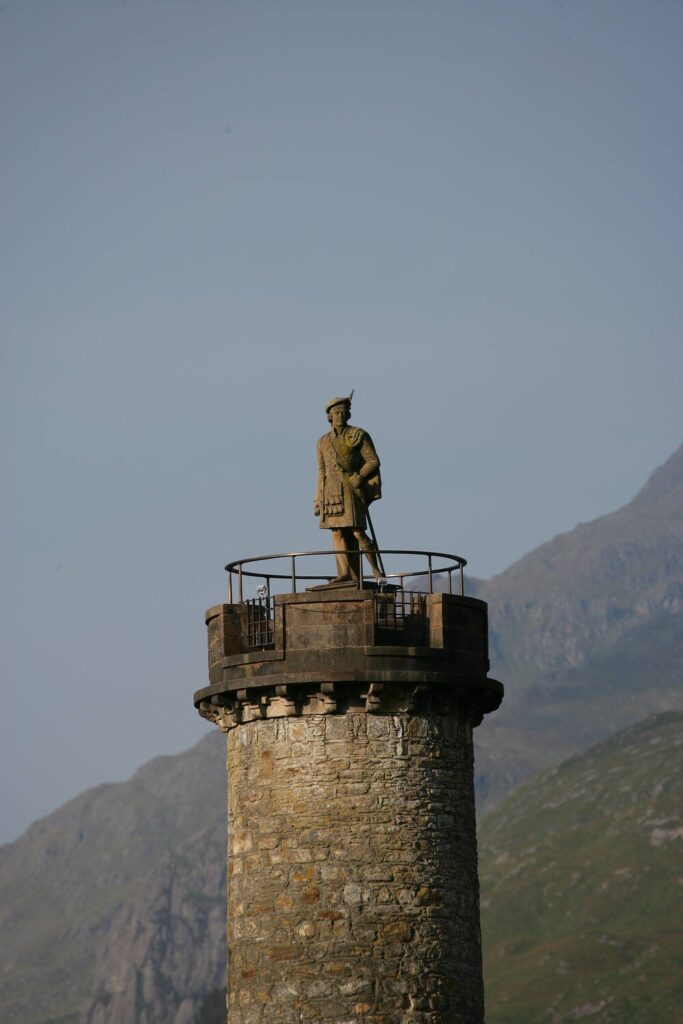
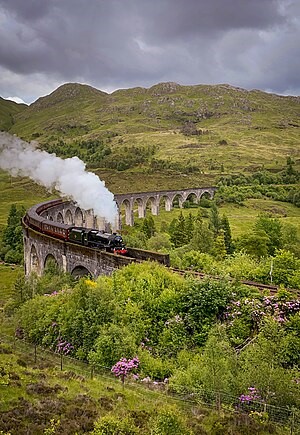
After the stop, we traveled on to Malaig, where the bus boarded a ferry for Armadale on the southern tip of the Isle of Skye, the largest of the Inner Hebrides with stunning scenery. The ferry trip was a might chilly, so most of us stayed inside the ferry!
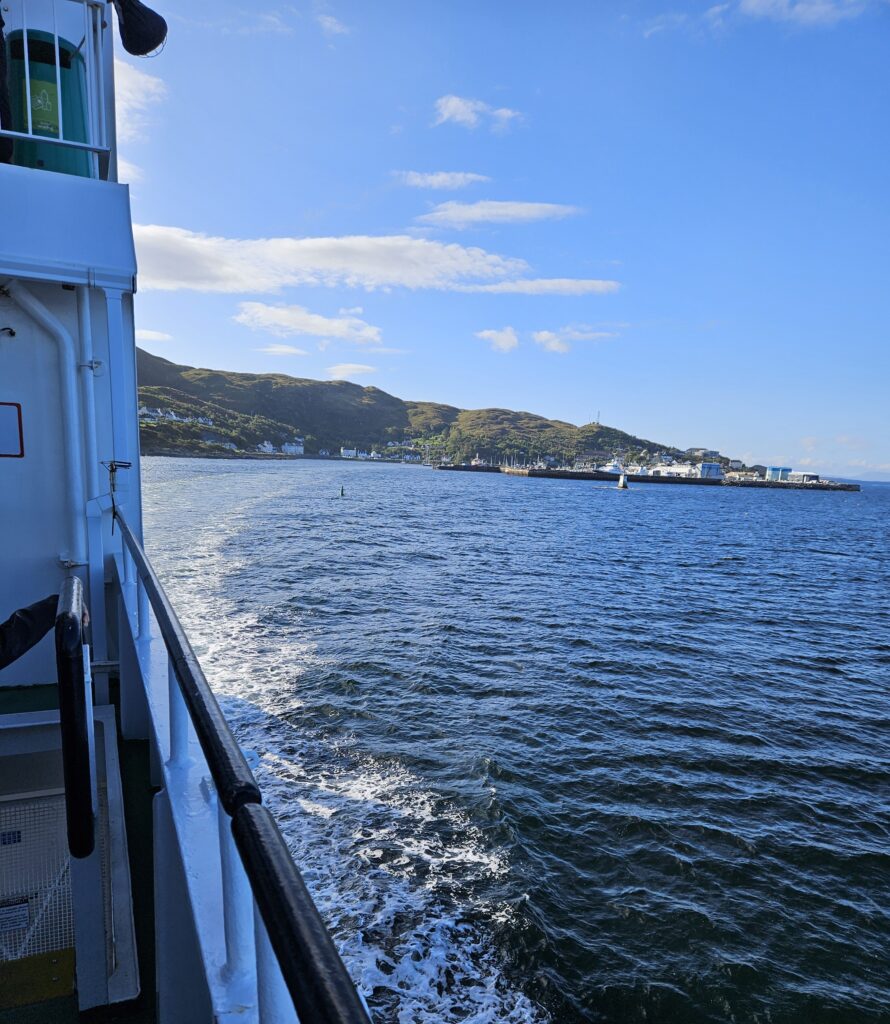
We were then driven to Armadale Castle and Gardens, built in the 18th century and home of Clan Macdonald. The castle was abandoned in 1925, but the gardens are beautifully maintained.
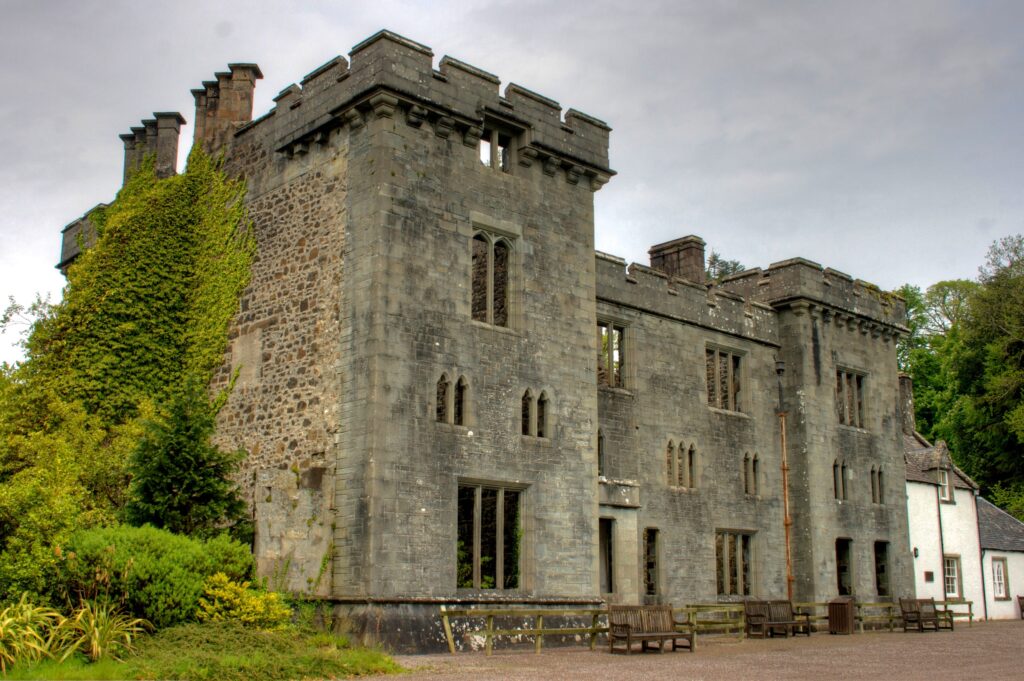
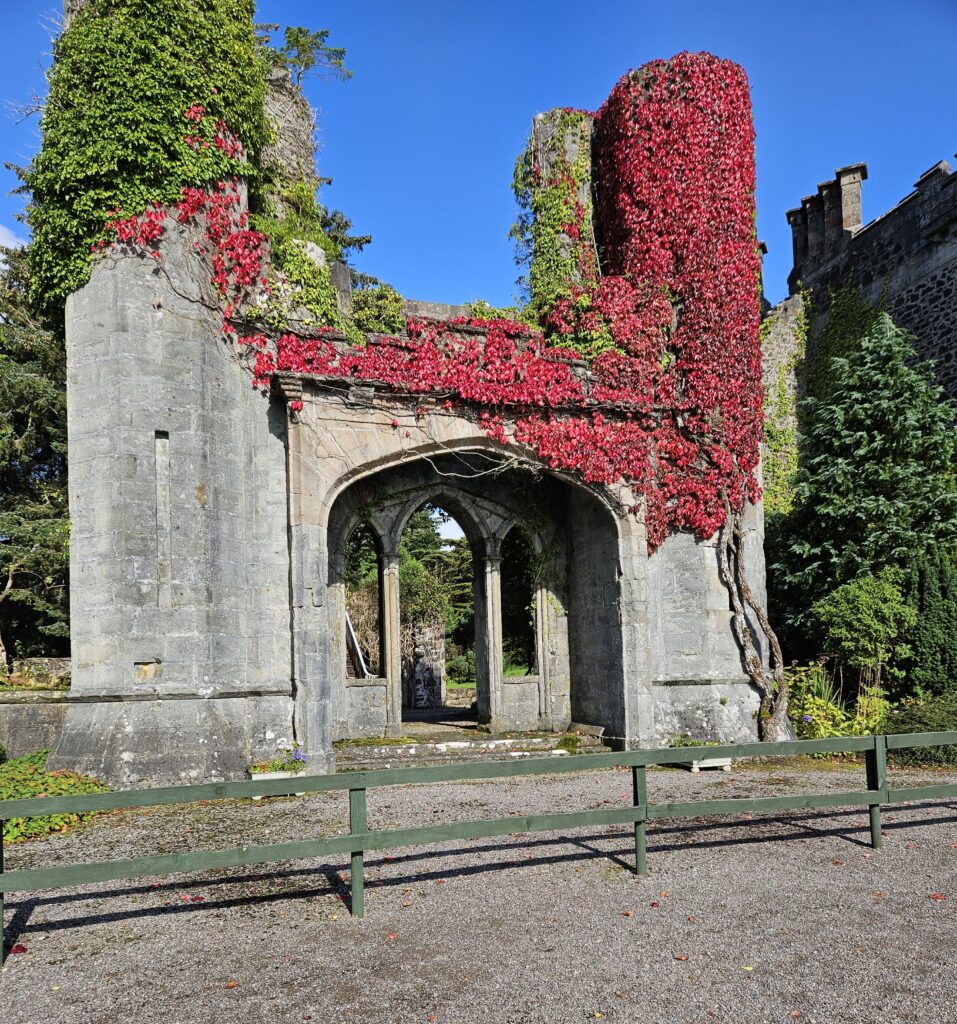
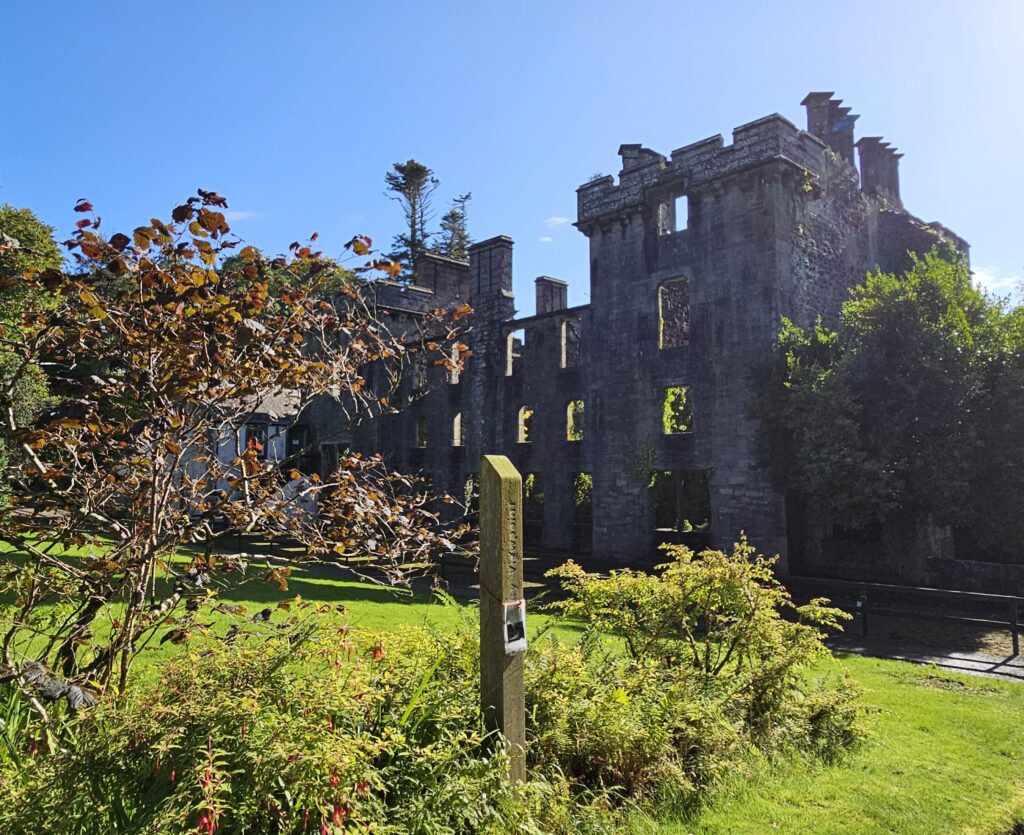
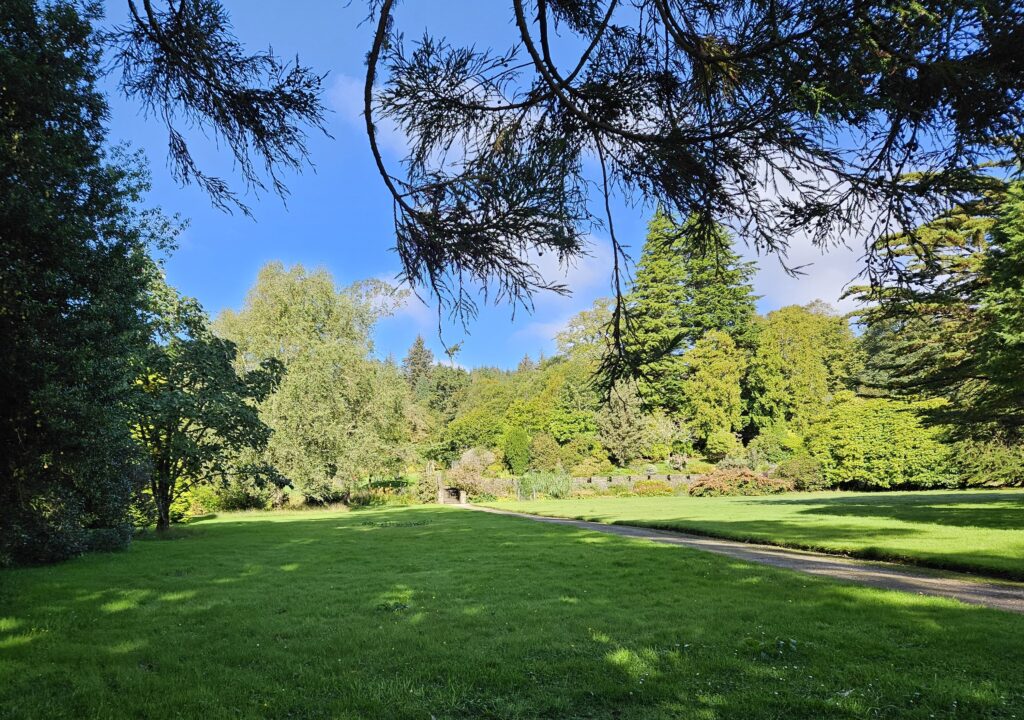
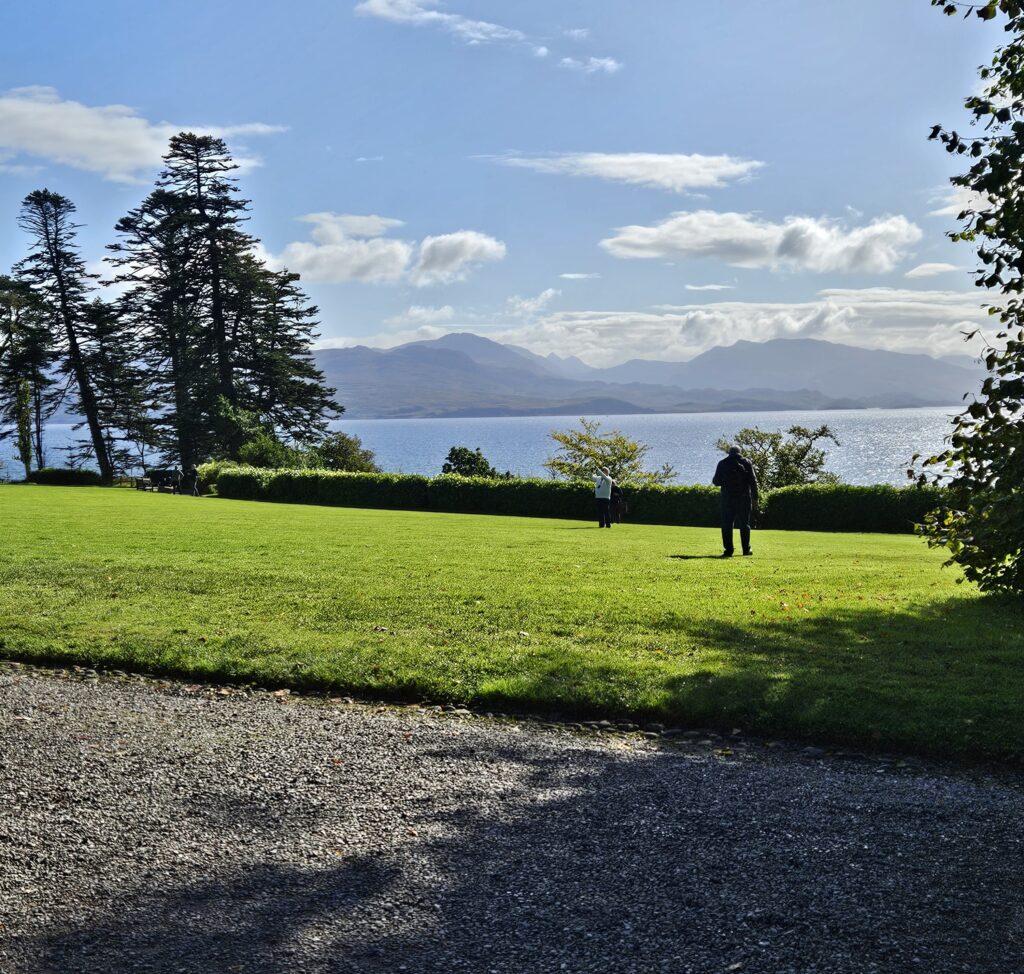
This last is the view from the front of the castle, would have always been approached from the water, because this was the home of a Highland Clan chief.
After lunch, we drove through Skye’s Black Cuillin Hills and returned to the mainland over the magnificent Skye Bridge (obviously not my photo) for a visit to the iconic Eilean Donan Castle, which sits on a small tidal island at the confluence of three lochs and dates to the 13th century.
The name Eilean Donan or island of Donan, is most probably called after the 6th century Irish Saint, Bishop Donan who came to Scotland around 580 AD. The castle was built as a protective measure against the Vikings who raided, settled, and controlled much of the North of Scotland and the Western Isles between 800 and 1266.
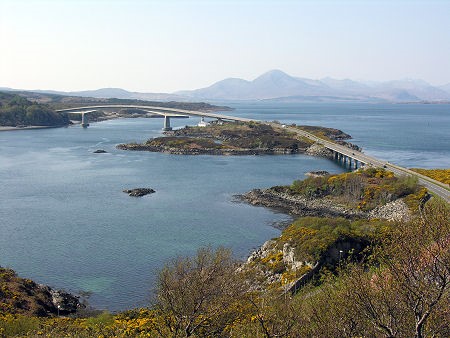
Over the centuries, the castle itself has expanded and contracted in size. Its role in the Jacobite rising ultimately culminated in the castle’s destruction. What remained of the castle after three days of bombardment by armed English frigates was blown up by the British following a surrender. For the best part of 200 years, the stark ruins of Eilean Donan lay neglected, abandoned and open to the elements, until Lt Colonel John Macrae-Gilstrap bought the island in 1911 and restored the castle according to surviving plans.
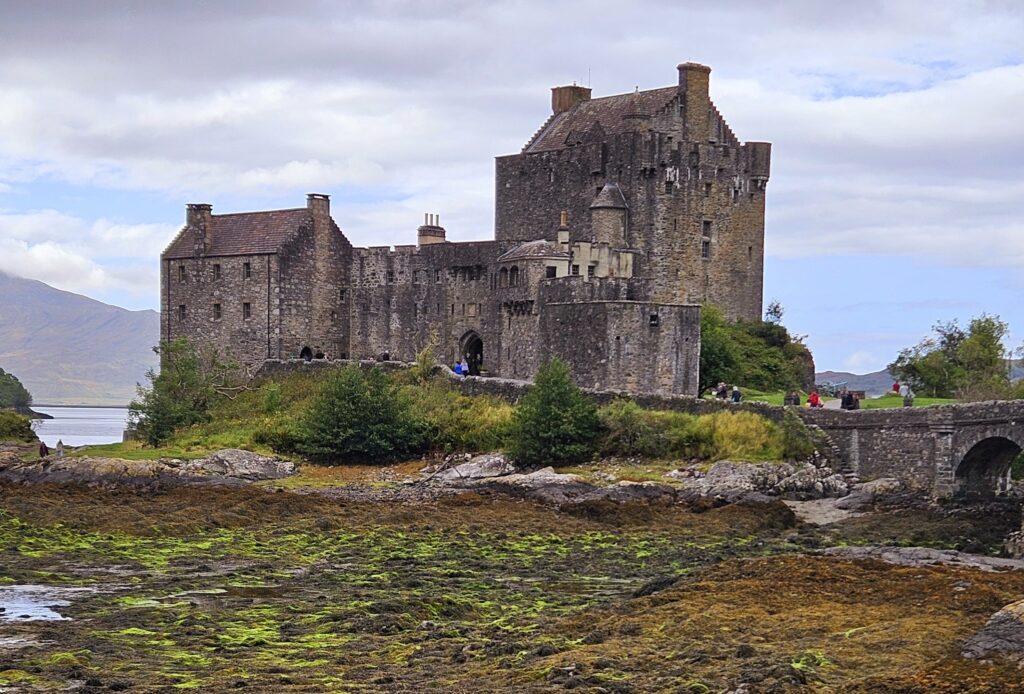
The castle is entered from the south, via a modern portal complete with a portcullis. Above the door is a Gaelic inscription which in translation reads: “As long as there is a Macrae inside, there will never be a Fraser outside”, referring to a bond of kinship between the two clans. The portal gives access to the courtyard. The keep itself, which we visited, follows the original dimensions, though the formerly subdivided ground floor is now a single room: a tunnel-vaulted Billeting Hall. Above on the first floor is the Banqueting Hall with an oak ceiling and decorated with coats of arms and 15th-century style fireplace
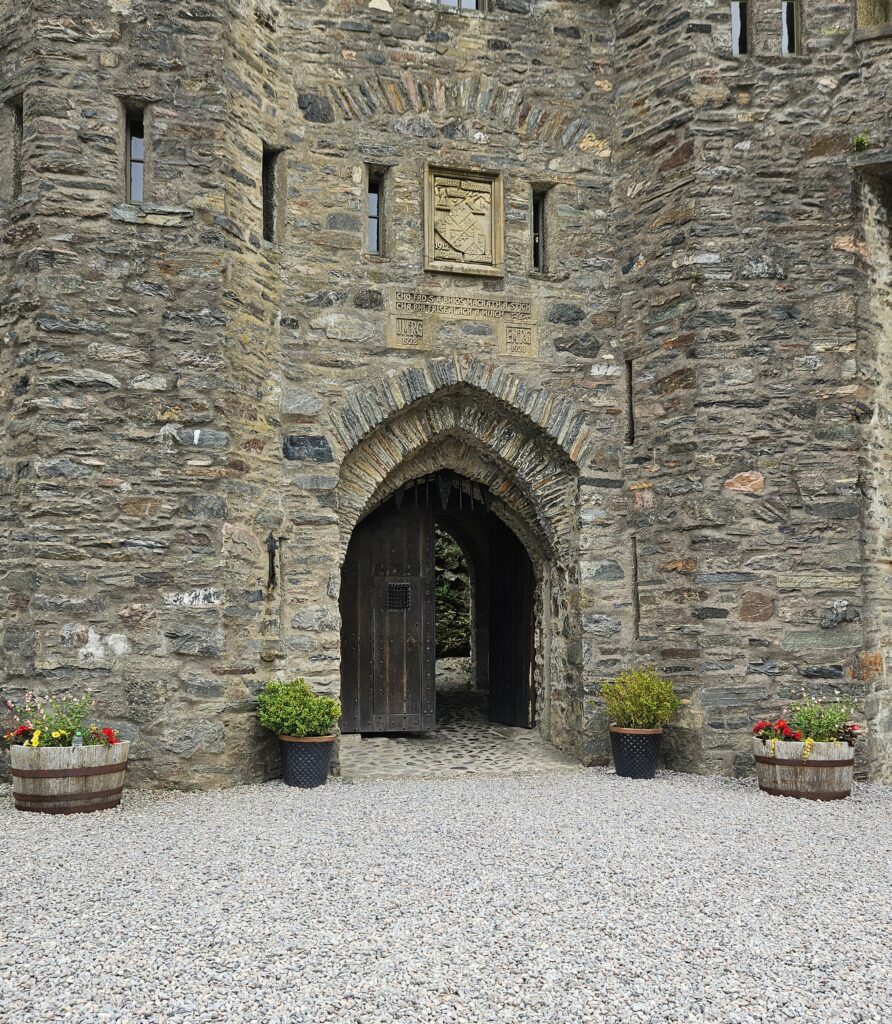
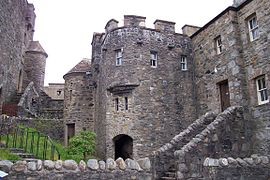
Gene and I decided this was a good place for a picture of our tired selves.
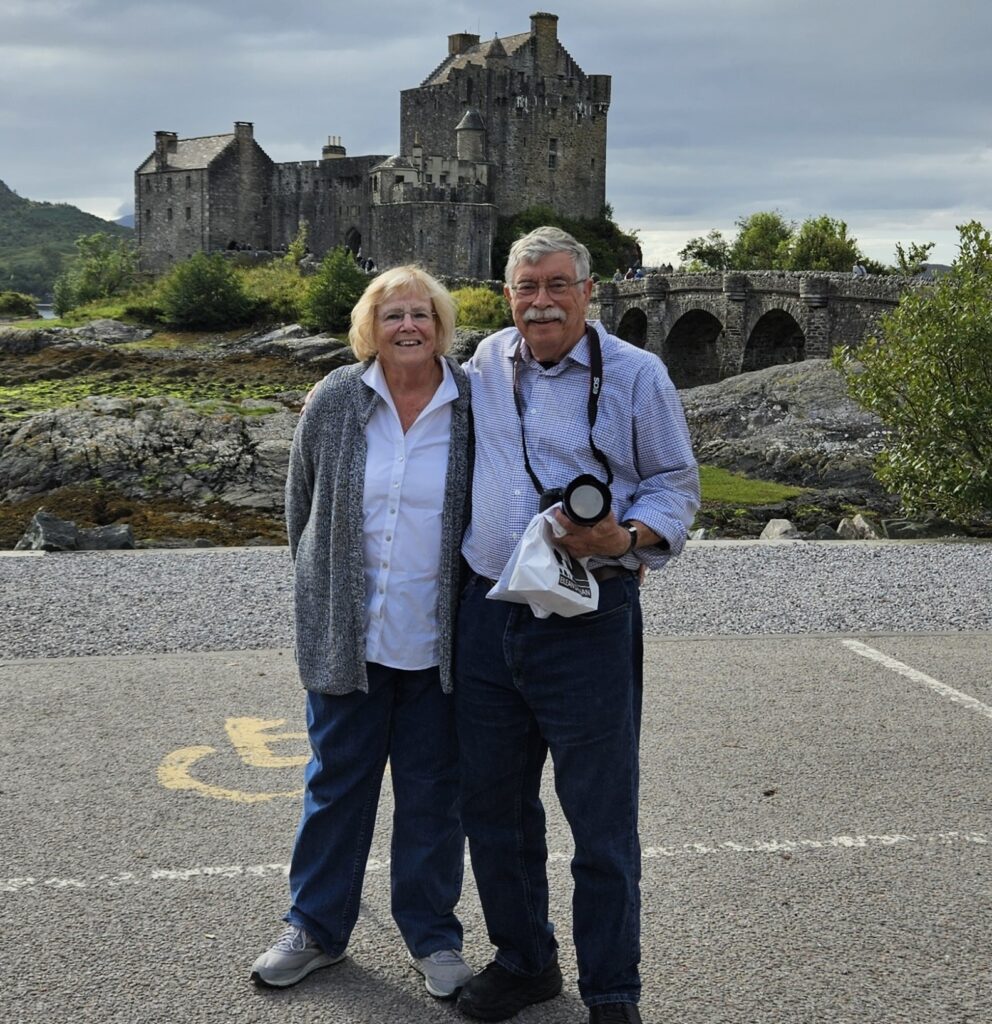
![]()

Wonderful trip, Noelle. Thanks for sharing it and the historical notes. I love the Highlands and although there are many parts of Scotland I haven’t visited yet, it’s my favourite part so far. I remember visiting Skye the first time before the bridge was built. A fantastic place!
Looks like so much fun, Noelle. Does your husband also enjoy history? Perhaps you’ll find a way to weave some of this environment into a future novel.
Hubs does indeed love history. If I could weave some of this in, it would be great but would require a few more visits. 😉
Awesome! Its genuinely remarkable post, I have got much clear idea regarding from this post
thank you.
Love seeing all your photos. What a great trip.
Exhausting, but great!
Thanks, Olga. I’d love to go back on a more relaxed schedule. The good thing was there were no midges!
Thanks, Olga. I’d love to go back on a more relaxed schedule. The good thing was there were no midges!
It looks like an amazing trip, Noelle 🙂 I love all the pictures and you can’t tell you were tired!
We hid it well, but slept like logs!
What a trip! What gorgeous photos! From the look of them, you had good weather too, which is a miracle right there. You had good reason to be exhausted after all of that, but the memories will stay forever. Thanks for taking us along.
You’re welcome. We had one day of hard rain, lots of days of mist, and some sun! I think we’re going to look for a less rigorous and packed tour the next time, maybe do it on our own.
I can’t wait to go there, Noelle. What beautiful photos and amazing history. I always wondered how castles ended up as ruins. Wars makes sense. I guess. Back then they were a dime a dozen (hard to imagine). And I suppose the upkeep was expensive. Still…. I’m glad some of them have survived for us to fantasize about. 🙂 Thanks for sharing your trip!
I’ve never been in a country with so many ruins – the Protestant – Catholic Wars did so much damage. It IS great to see them and fantasize what life would have been like when they were intact!
Another lovely post, Noelle. I seem to be finding your posts late, sorry. – I’m always intrigued by the history and the ruins in Scotland. Smashing photos. x
Thanks, Judith. Scotland is so scenic – it’s hard to take a bad photo!
Family Dollar I very delighted to find this internet site on bing, just what I was searching for as well saved to fav
Smartcric I very delighted to find this internet site on bing, just what I was searching for as well saved to fav
obviously like your website but you need to test the spelling on quite a few of your posts Several of them are rife with spelling problems and I to find it very troublesome to inform the reality on the other hand Ill certainly come back again
I was suggested this web site by my cousin Im not sure whether this post is written by him as no one else know such detailed about my trouble You are incredible Thanks
Puraburn For the reason that the admin of this site is working, no uncertainty very quickly it will be renowned, due to its quality contents.
The use of statistics and facts in this post adds credibility and depth.